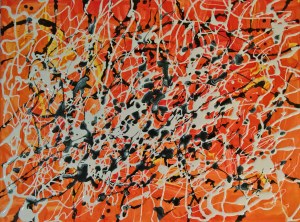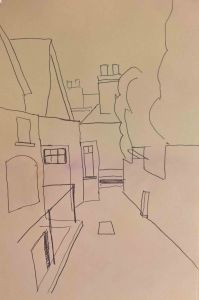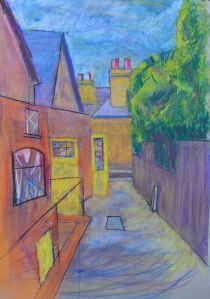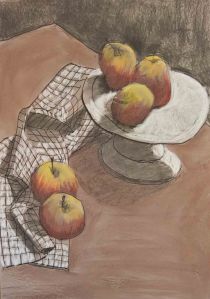Dear Cleo
I hope you are well and I am looking forward to catching up with you in the morning. I have a new favourite painting, The reply of the Zaporozhian Cossacks and here are a few of my thoughts on it and its detractors.
I am asked to respond to the quotation by Clement Greenberg “Picasso paints cause, Repin paints effect” and relate this quotation to Jackson Pollock.
The quotation needs a sense of context, Greenberg was writing in the Partisan Review that was anti Russian and financed by the CIA. While Picasso was still very much alive at the time of the Greenberg’s article Repin had died 9 years previously but was championed by the Soviet Communist Government as a realist painter.
Greenberg who frequented the same drinking dens as the future Abstract Expressionists was perhaps lobbying the United States Government to get behind the American Art and promote it to the world. The CIA may not have been on the right page in 1939, but it was right up there with the KGB in the cold war years of the 1950’s in promoting Abstract Expressionism, painted mostly by left wing minded painters, as a true product of the land of the free.
Everybody knows who Picasso was but Repin is slightly off the radar if you are only familiar with Western European Art. Repin exhibited at the Paris Salon between 1974 and 1876 thus being one of the artists that kept the Impressionists out of the Salon and thereby giving birth to Impressionism. Repin greatest work is, in my opinion, the magnificent 3500 x 2000 meter Reply of the Zaporozhian Cossacks (if you read the attached article you will understand what it is that the Cossacks find so amusing) that took him eleven years to paint he also painted a second version that was never completed. It is said that Repin made as many as 100 sketches for each finished work, his drawings are breathtaking, on a par with Raphael, who Greenberg is also quite dismissive of in his article.
To class Repin as kitsch is akin to saying Leonardo is an idiot or ”only with Rembrandt do “lonely” artists begin to appear, lonely in their art” Greenberg actually states that in the same article, at least Ruskin could draw.
With regard to “inflections of the personal”, as an artist, I consider that anything I create is full of my personality, whether what I produce is abstract or realist. Kitsch is not created by artists it is created by museum gift shops, booksellers, chocolate box manufacturers and Governments. Superior culture is one of the most artificial of all human creations (Greenberg 18) this is the KGB with their realist painters, the CIA with their abstract expressionists, the Catholic Church with its Renaissance or the French with the impressionists you chose, Greenberg chose the CIA.
Greenberg was of the vanguard that promoted abstract expressionism to the level of kirsch, champion and protector of the Abstract Expressionists but his first review of Jackson Pollock in The Nation Magazine in 1943 is as follows;
“There is both surprise and fulfilment in Jackson Pollock’s not so abstract abstractions. He is the first painter I know of to have got something positive from the muddiness of colour that so profoundly characterizes a great deal of American painting.” While he critiqued Pollock’s larger paintings as the artist taking “orders he can’t fill,” Greenberg did find the smaller work “much more conclusive… among the strongest abstract paintings I have yet seen by an American”
In an article on Artspace Greenberg is quoted as saying “I would not deny being one of those critics who educate themselves in public.” In the language of the proletariat this means he was making it up as he went along, like a good politician.
It is nice, however, that in the footnote to the article, when it was re-published in 1965, Greenberg had decided that Repin was not Kitsch, it was just that at the time of writing Greenberg did not know who Repin was or what he painted
All that having been said I think that maybe the main thrust of the question is, are Pollock’s paintings about painting from his emotions not illustrating them, which of course, is a rhetorical question and I pay homage in the way I know best, imitation being the greatest form of flattery.

Figure 1 (17 07 14) Greenberg contradictions I, tempera, acrylic and enamel on A3 canvas
Well darling, that was a lot of reading, one day I will go to Russia to see the Cossacks and with luck you may get to come with me. See you tomorrow.
Love as always
Mickos x
PS
http://www.artspace.com/magazine/art_101/know-your-critics/what_did_clement_greenberg_do-52430
Greenberg C. Art and Culture Critical Essays 1965 Boston ,Mass Beacon Press








